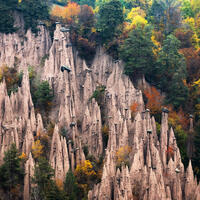The term Giorni della merla, known throughout Italy, is linked to folk superstitions and meteorological phenomena. It is believed that these days are the coldest of the whole winter.
According to one superstition, it was once so cold at the end of January that the white scythe family had to hide in the chimney to avoid freezing. They didn't come out until February 1, all black with soot - they've remained that color ever since.
According to another legend, the pure white blackbird was then tormented every year by the month of January, which at that time had only 28 days. As soon as the blackbird came out of its hiding place to forage for food, January sent a frost and snowstorm down on it each time. One year, the blackbird prepared for it, making provisions for the entire month so it wouldn't have to come out, and thus stayed hidden in the warmth for the entire month of January. On the last day of January, he came out and started singing happily, which made January so angry that he borrowed three days from the month of February (he still had all 31 of them then) and sent such a cold that the blackbird had to hide in the chimney. When he came out after three days, his beautiful white feathers were forever blackened with soot.
The Giorni della Merla also have their place in folk meteorology. Italians believe that if these days are really cold, spring will be warm and pleasant. Conversely, if they are unusually warm, it means that spring will be cold and rainy. This belief still persists today, especially in the countryside.







